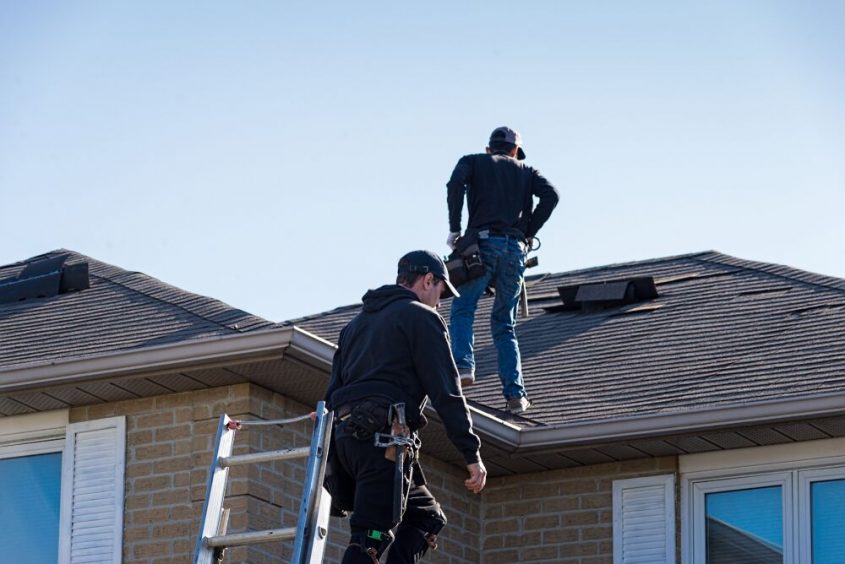A Complete Guide to Roofing Safety: Tips and Best Practices
Roofing safety is one of the most important things to consider when working in roof construction or maintenance. Whether you’re a contractor taking on a new job, a homeowner trying to tackle some repairs, or just someone who needs to perform basic inspections, this guide will provide you with valuable tips and best practices to keep yourself safe while working on roofs.
It’s essential that all workers understand the dangers associated with working at heights. This includes the risk of falls from ladders, scaffolding, and other structures used for access and support during roof work. The weather can also affect the conditions and hazards present on a roof – strong winds, high temperatures, wet surfaces, etc, may make it difficult to maintain balance and increase the risk of slips and falls.
In this guide, we’ll look at some best practices for roofing safety and provide tips to help ensure a safe working environment. We’ll also discuss the important role that protective equipment plays in keeping roofing contractors safe while performing their duties on roofs
Contents [hide]
Tip #1: Wear the Appropriate Safety Equipment
When working on a roof, the most important thing is to wear the appropriate safety equipment. This includes items such as non-slip shoes, fall protection harnesses, protective headgear, and hard hats. You should also ensure that any ladders or scaffolding being used are in good condition and properly secured so they don’t shift or give way when you’re standing on them.
Best Practices for Wearing the Appropriate Safety Equipment
– Always read and follow the manufacturer’s instructions on how to properly use safety equipment.
– Inspect all safety equipment before each use and replace any worn or damaged items.
– Secure ladders and scaffolding according to manufacturers’ instructions.
– Wear protective clothing, like long pants, closed-toe shoes, and a hard hat.
Tip #2: Identify Potential Hazards Before Working On Roofs
Before beginning any work, it is important to identify potential hazards on roofs that could lead to falls or other injuries. This includes loose shingles, wet surfaces, broken gutters or skylights, uneven slopes or bumps in the surface of the roof, power lines nearby, and other objects that could cause a hazard.
Best Practices to Identify Potential Hazards
– Inspect the roof area for hazards before starting work.
– Make sure to wear slip-resistant shoes in wet conditions.
– Secure any loose objects before working on roofs near them.
– Wear protective eyewear when working with power tools or around objects that may break or splinter.
– Stay away from power lines and other sources of electricity.
Tip 3: Use Fall Protection Equipment When Working At Heights
When working at heights, it is important to use appropriate fall protection equipment such as safety harnesses, lanyards, and guardrails. These devices will help protect you from falls and provide a measure of safety when working at heights.
Best Practices for Using Fall Protection Equipment
– Inspect all fall protection equipment before each use and replace any worn or damaged items.
– Wear a full-body harness with a lanyard attached to an anchor point on the roof.
– Make sure guardrails are properly placed and secure enough to prevent falls.
– When using scaffolding, ensure it is solidly constructed and that all posts, cross braces, platforms, and toe boards are securely in place.
Safety is paramount when working on roofs, so following these tips and best practices will help ensure that you remain safe while doing your job. Remember to always inspect safety equipment before each use, identify potential hazards before starting work, and use fall protection equipment when working at heights. These practices will help keep you and your workers safe while on the job.
By following these safety guidelines and best practices, roofers can work safely and confidently, knowing that they have taken all the necessary precautions to protect themselves from potential hazards. Employers should also ensure their workers are adequately trained in roofing safety so they understand the risks associated with their job and know how to avoid them. This is one thing that Mighty Dog Roofing is proud to do for its employees – providing them with the knowledge, skill, and confidence needed to perform their duties safely. With a little bit of preparation, research, and training, roofers can make sure they’re working safely and efficiently – no matter what kind of conditions or hazards may come their way!




